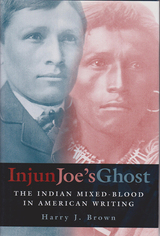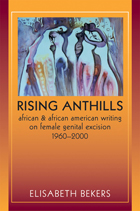2 books about American Writing

Injun Joe's Ghost
The Indian Mixed-Blood in American Writing
Harry J. Brown
University of Missouri Press, 2004
What does it mean to be a “mixed-blood,” and how has our understanding of this term changed over the last two centuries? What processes have shaped American thinking on racial blending? Why has the figure of the mixed-blood, thought too offensive for polite conversation in the nineteenth century, become a major representative of twentieth-century native consciousness?
In Injun Joe’s Ghost, Harry J. Brown addresses these questions within the interrelated contexts of anthropology, U.S. Indian policy, and popular fiction by white and mixed-blood writers, mapping the evolution of “hybridity” from a biological to a cultural category. Brown traces the processes that once mandated the mixed-blood’s exile as a grotesque or criminal outcast and that have recently brought about his ascendance as a cultural hero in contemporary Native American writing.
Because the myth of the demise of the Indian and the ascendance of the Anglo-Saxon is traditionally tied to America’s national idea, nationalist literature depicts Indian-white hybrids in images of degeneracy, atavism, madness, and even criminality. A competing tradition of popular writing, however, often created by mixed-blood writers themselves, contests these images of the outcast half-breed by envisioning “hybrid vigor,” both biologically and linguistically, as a model for a culturally heterogeneous nation.
Injun Joe’s Ghost focuses on a significant figure in American history and culture that has, until now, remained on the periphery of academic discourse. Brown offers an in-depth discussion of many texts, including dime novels and Depression-era magazine fiction, that have been almost entirely neglected by scholars. This volume also covers texts such as the historical romances of the 1820s and the novels of the twentieth-century “Native American Renaissance” from a fresh perspective. Investigating a broad range of genres and subject over two hundred year of American writing, Injun Joe’s Ghost will be useful to students and professionals in the fields of American literature, popular culture, and native studies.
[more]

Rising Anthills
African and African American Writing on Female Genital Excision, 1960–2000
Elisabeth Bekers
University of Wisconsin Press, 2010
Female genital excision, or the ritual of cutting the external genitals of girls and women, is undoubtedly one of the most heavily and widely debated cultural traditions of our time. By looking at how writers of African descent have presented the practice in their literary work, Elisabeth Bekers shows how the debate on female genital excision evolved over the last four decades of the twentieth century, in response to changing attitudes about ethnicity, nationalism, colonialism, feminism, and human rights.
Rising Anthills (the title refers to a Dogon myth) analyzes works in English, French, and Arabic by African and African American writers, both women and men, from different parts of the African continent and the diaspora. Attending closely to the nuances of language and the complexities of the issue, Bekers explores lesser-known writers side by side with such recognizable names as Ngugi wa Thiong’o, Flora Nwapa, Nawal El Saadawi, Ahmadou Kourouma, Calixthe Beyala, Alice Walker, and Gloria Naylor. Following their literary discussions of female genital excision, she discerns a gradual evolution—from the 1960s, when writers mindful of its communal significance carefully “wrote around” the physical operation, through the 1970s and 1980s, when they began to speak out against the practice and their societies’ gender politics, to the late 1990s, when they situated their denunciations of female genital excision in a much broader, international context of women’s oppression and the struggle for women’s rights.
Rising Anthills (the title refers to a Dogon myth) analyzes works in English, French, and Arabic by African and African American writers, both women and men, from different parts of the African continent and the diaspora. Attending closely to the nuances of language and the complexities of the issue, Bekers explores lesser-known writers side by side with such recognizable names as Ngugi wa Thiong’o, Flora Nwapa, Nawal El Saadawi, Ahmadou Kourouma, Calixthe Beyala, Alice Walker, and Gloria Naylor. Following their literary discussions of female genital excision, she discerns a gradual evolution—from the 1960s, when writers mindful of its communal significance carefully “wrote around” the physical operation, through the 1970s and 1980s, when they began to speak out against the practice and their societies’ gender politics, to the late 1990s, when they situated their denunciations of female genital excision in a much broader, international context of women’s oppression and the struggle for women’s rights.
[more]
READERS
Browse our collection.
PUBLISHERS
See BiblioVault's publisher services.
STUDENT SERVICES
Files for college accessibility offices.
UChicago Accessibility Resources
home | accessibility | search | about | contact us
BiblioVault ® 2001 - 2024
The University of Chicago Press









